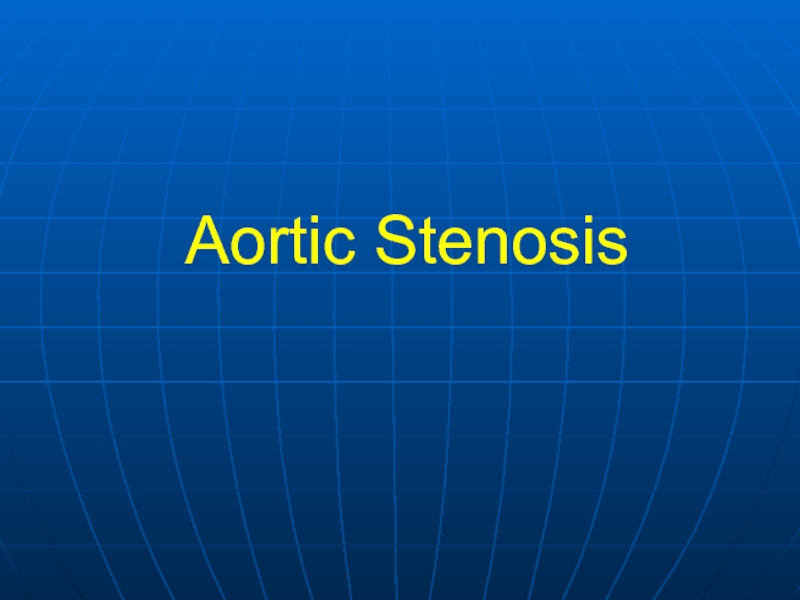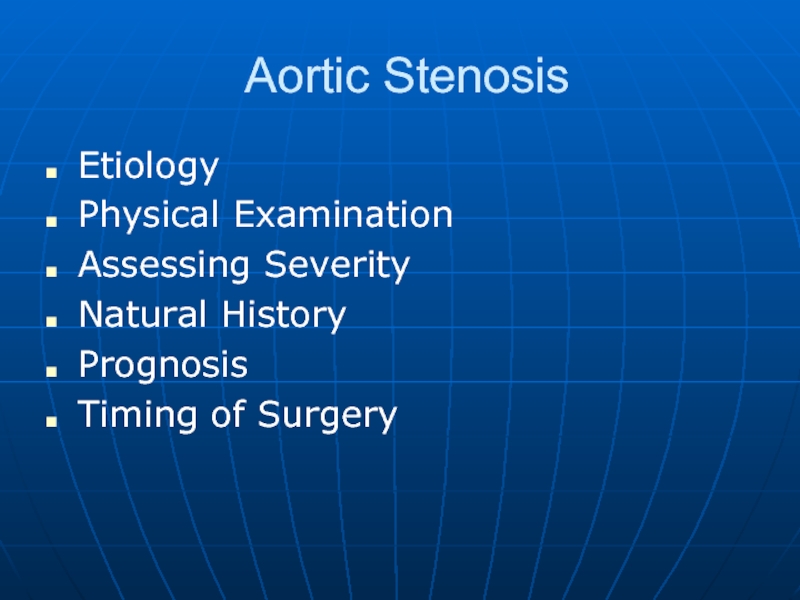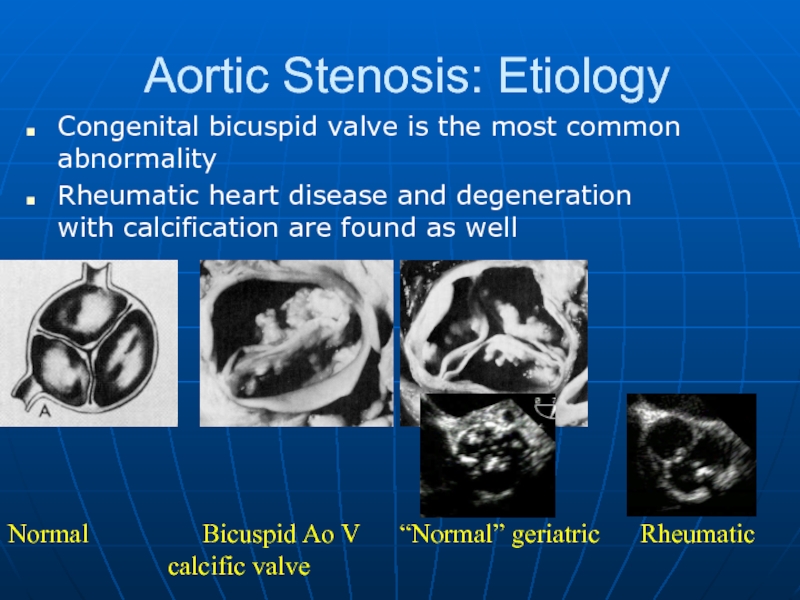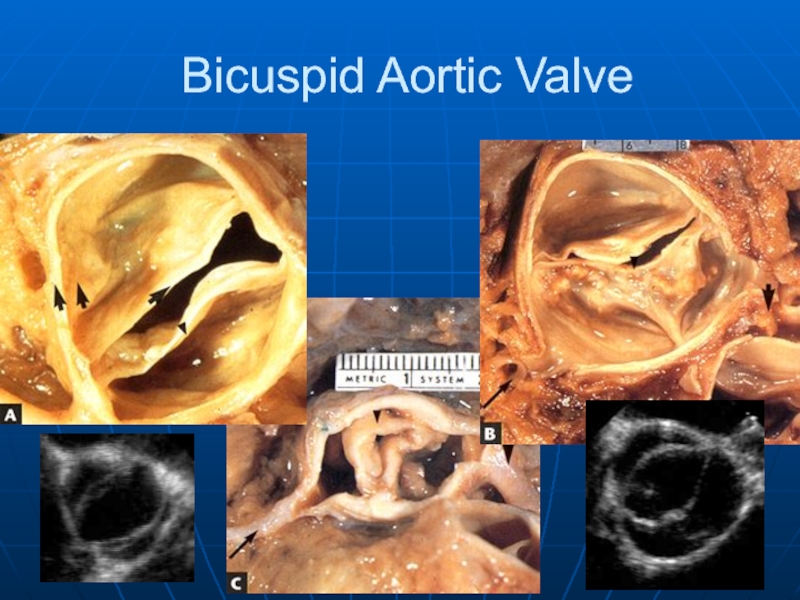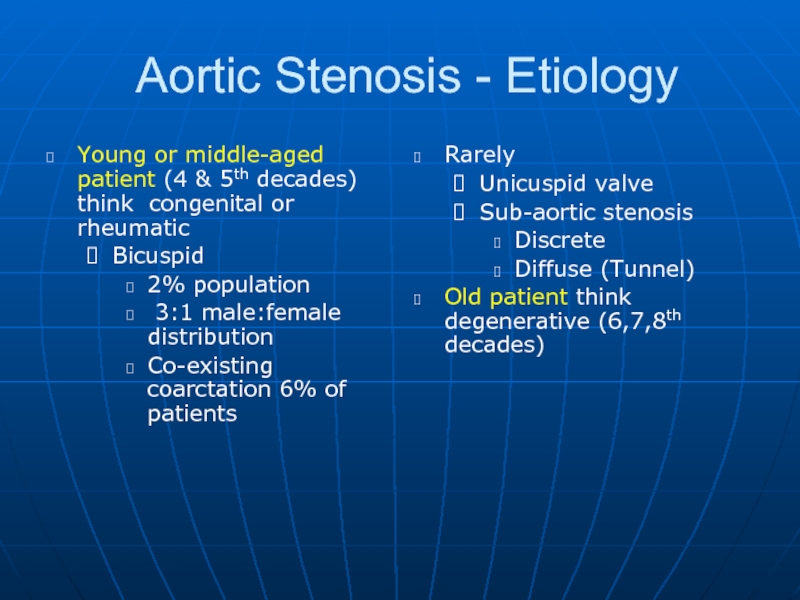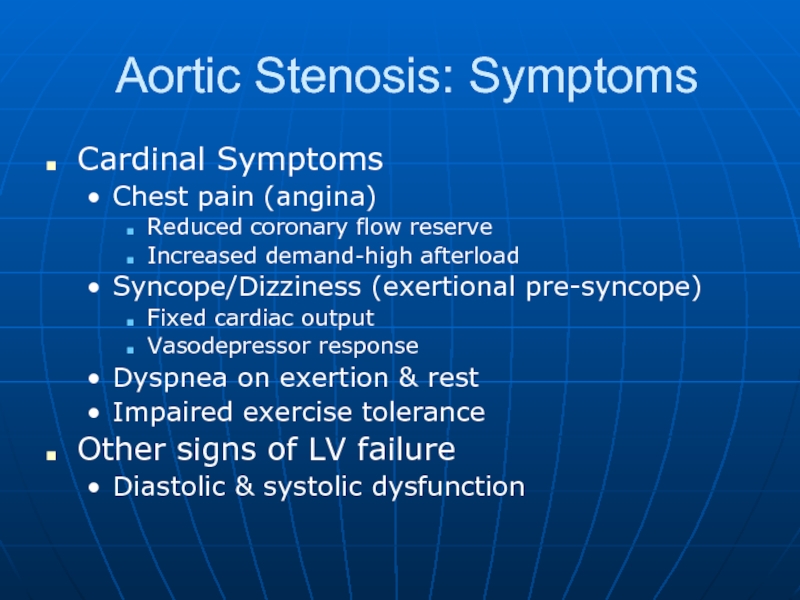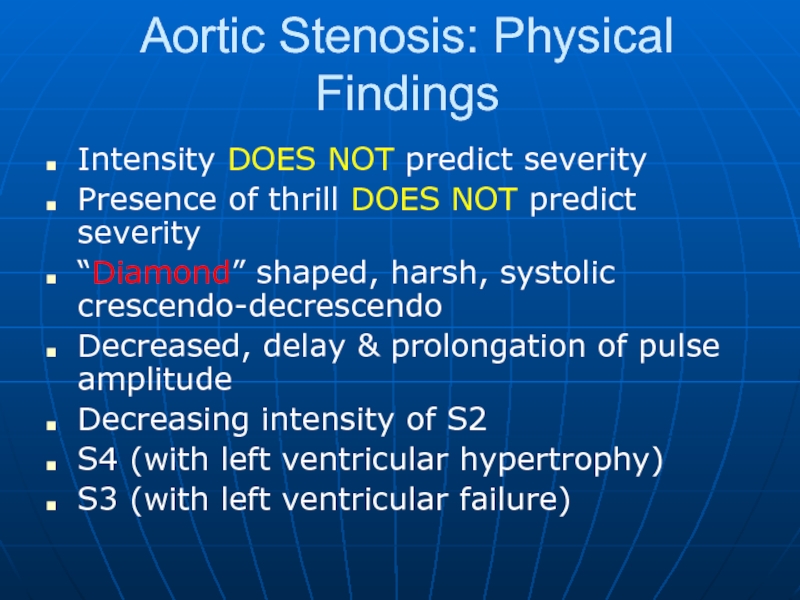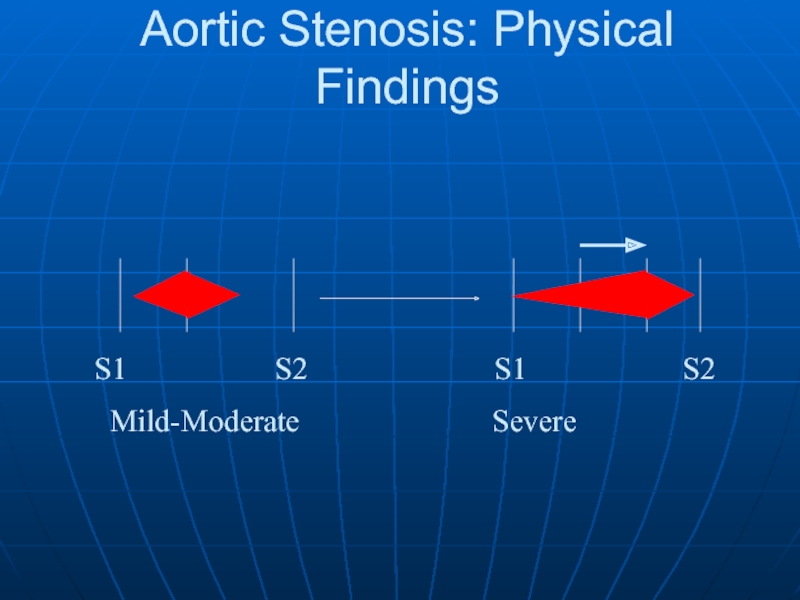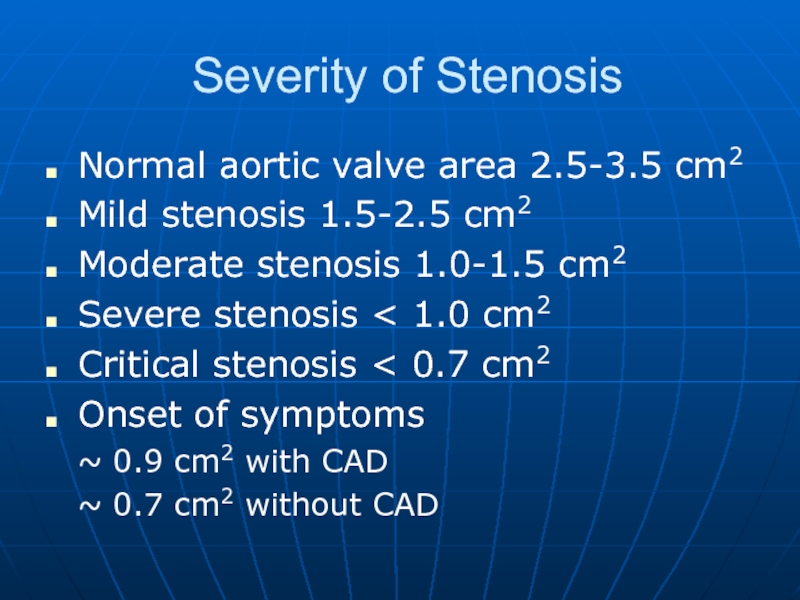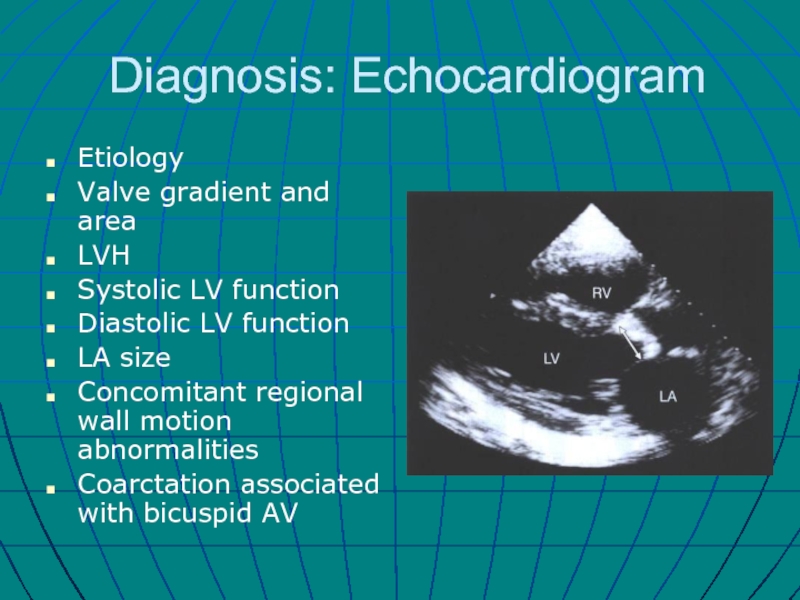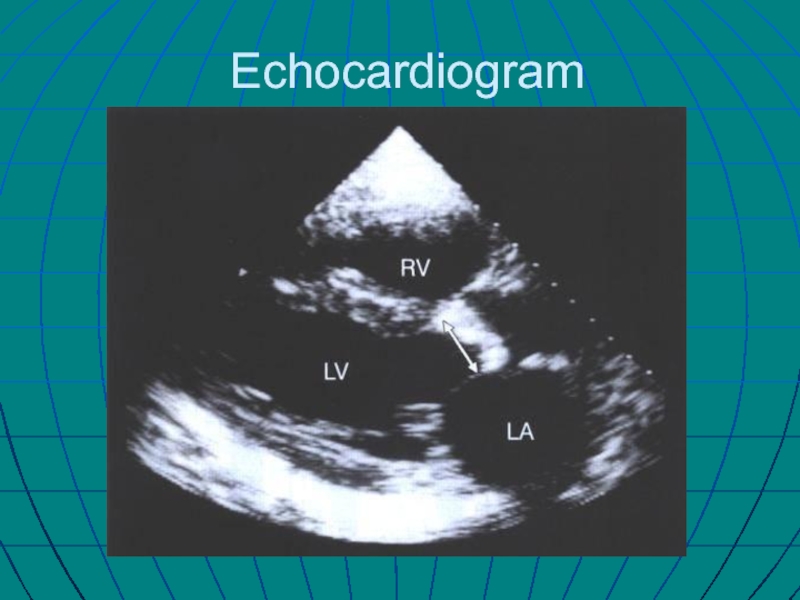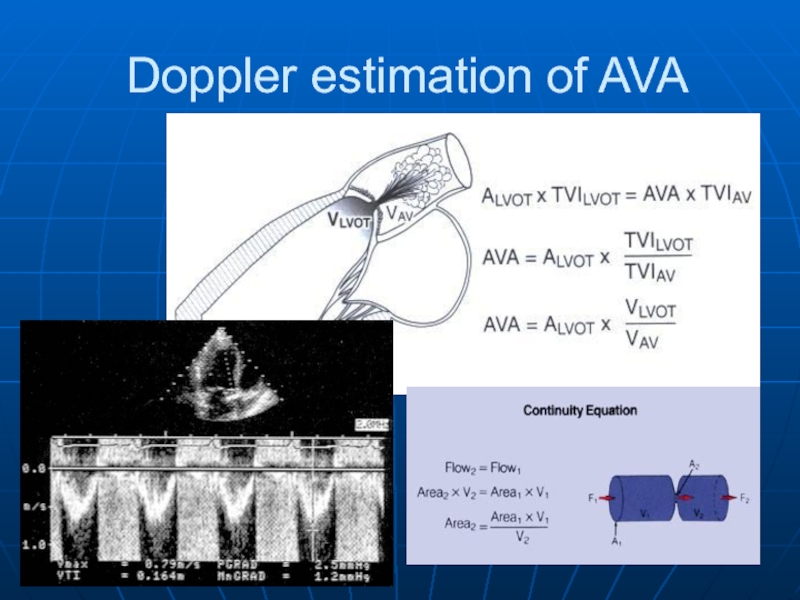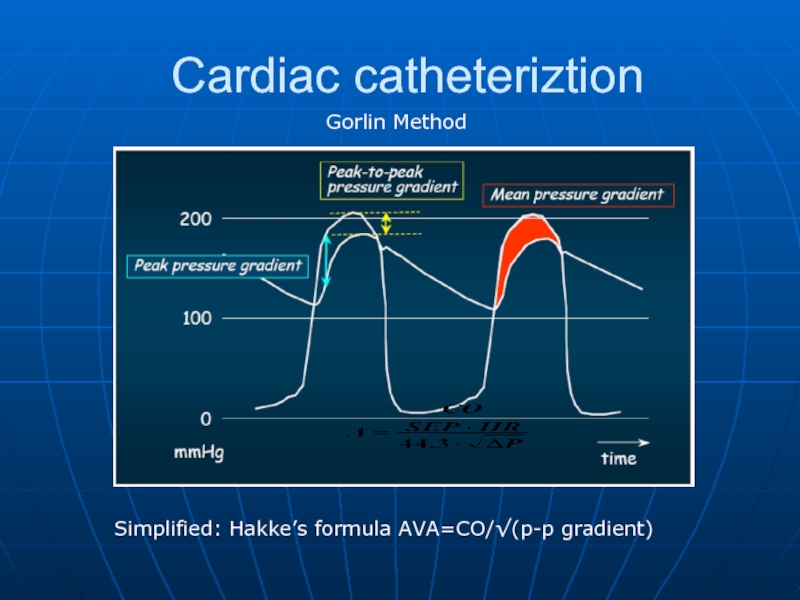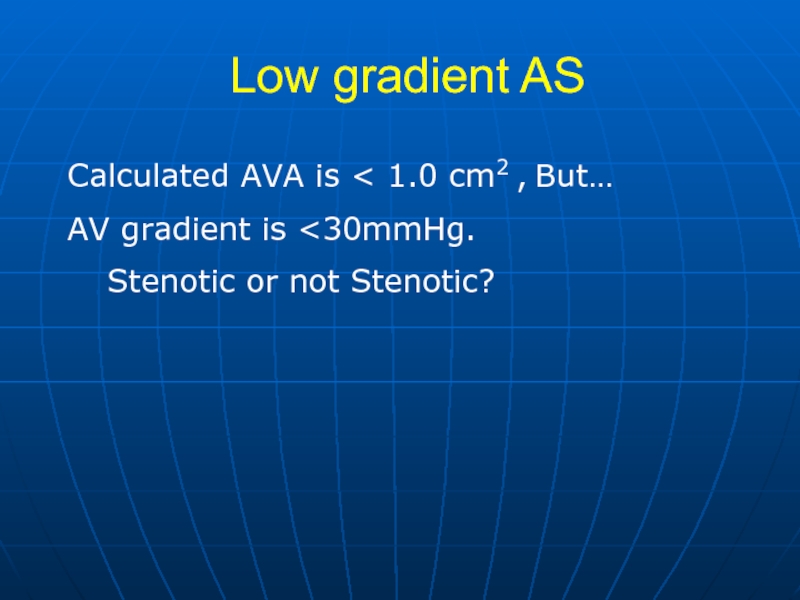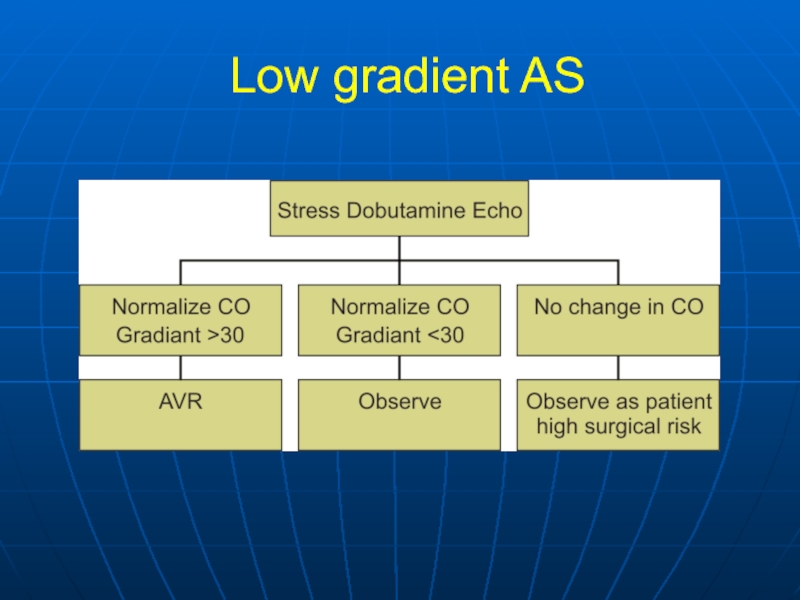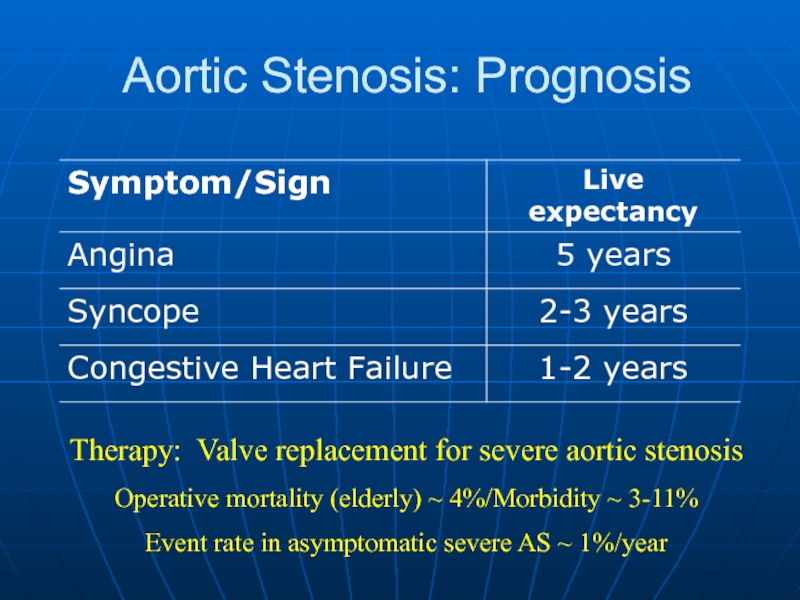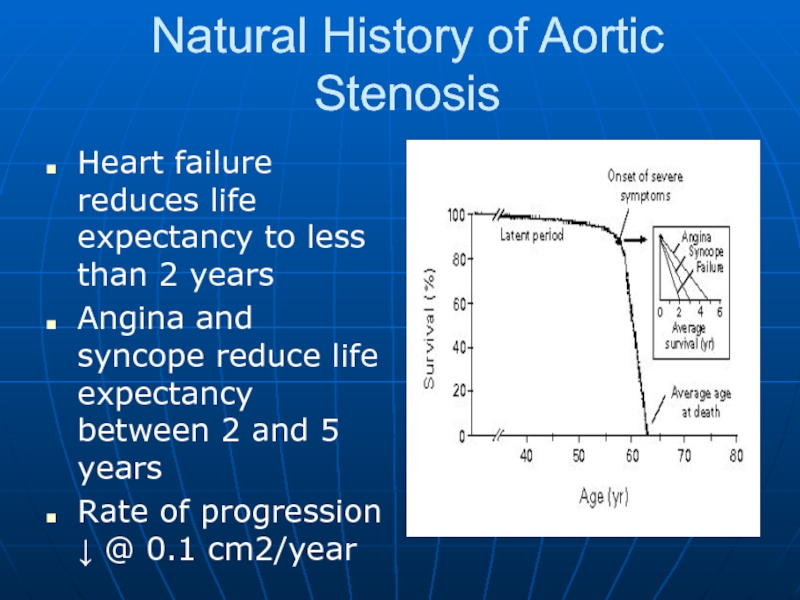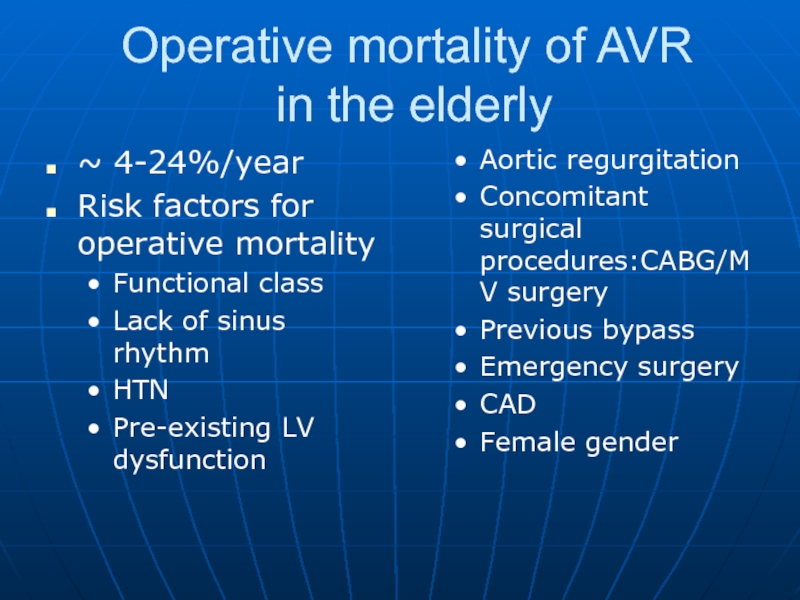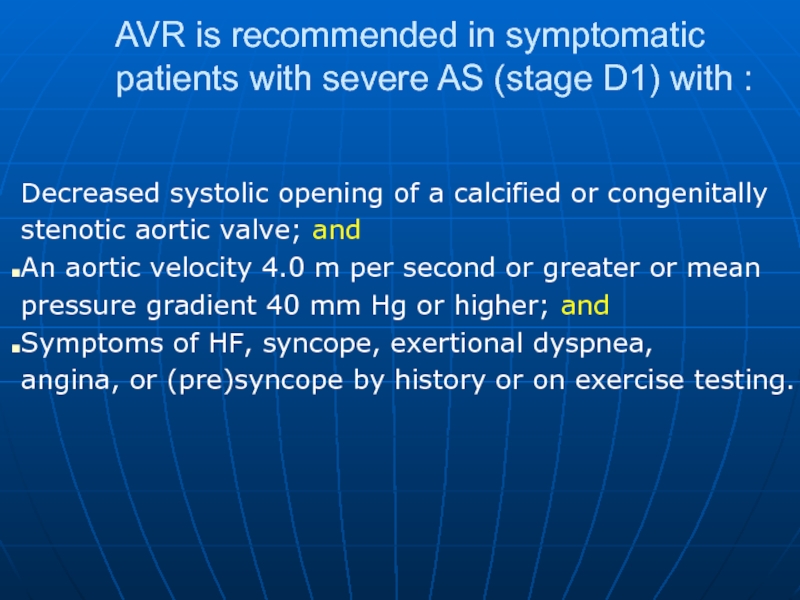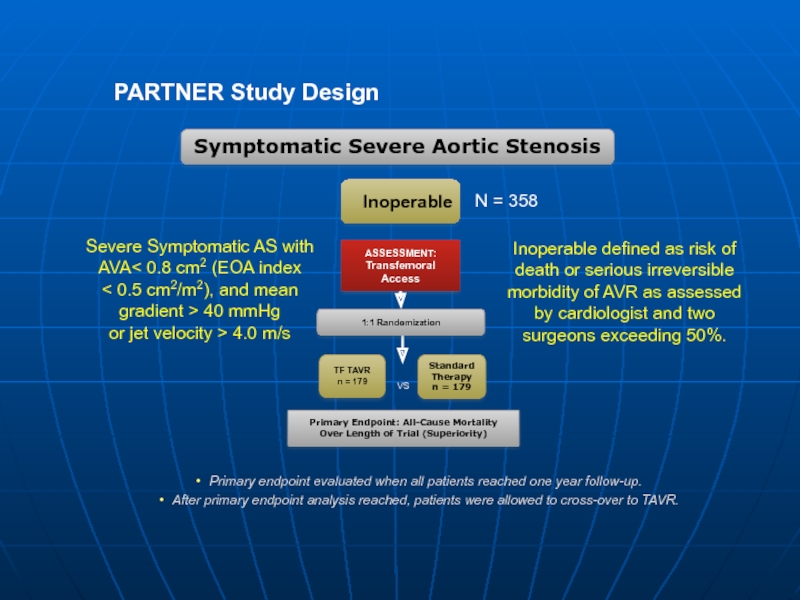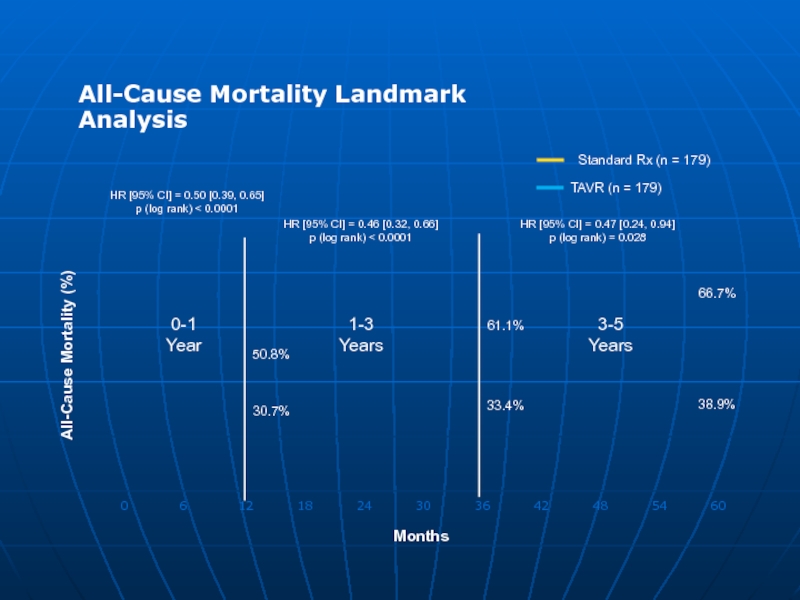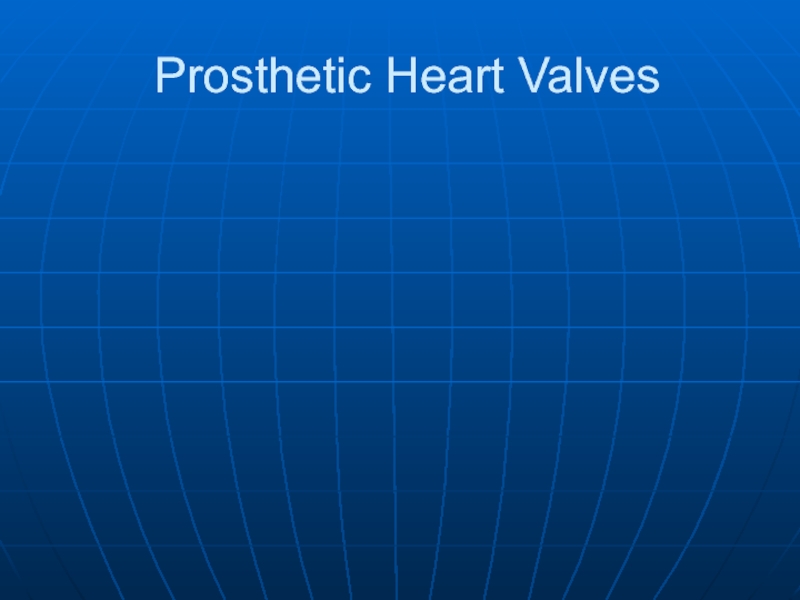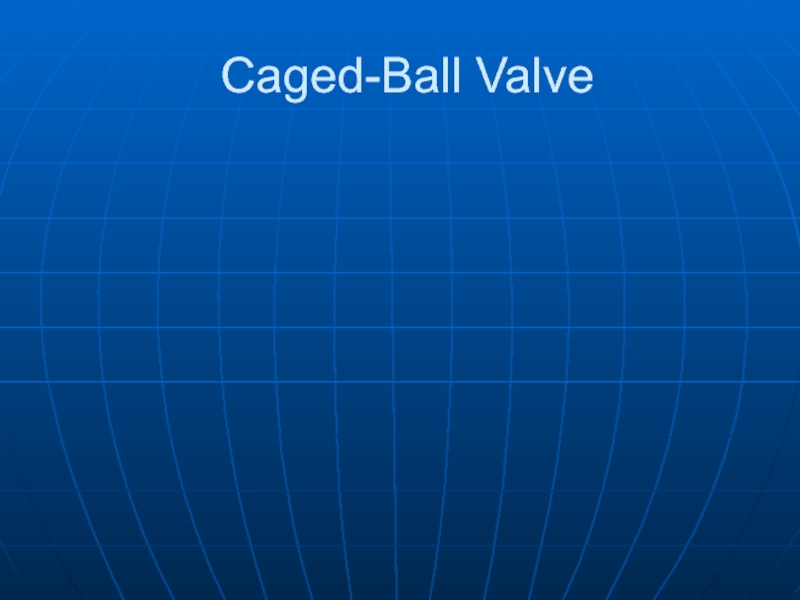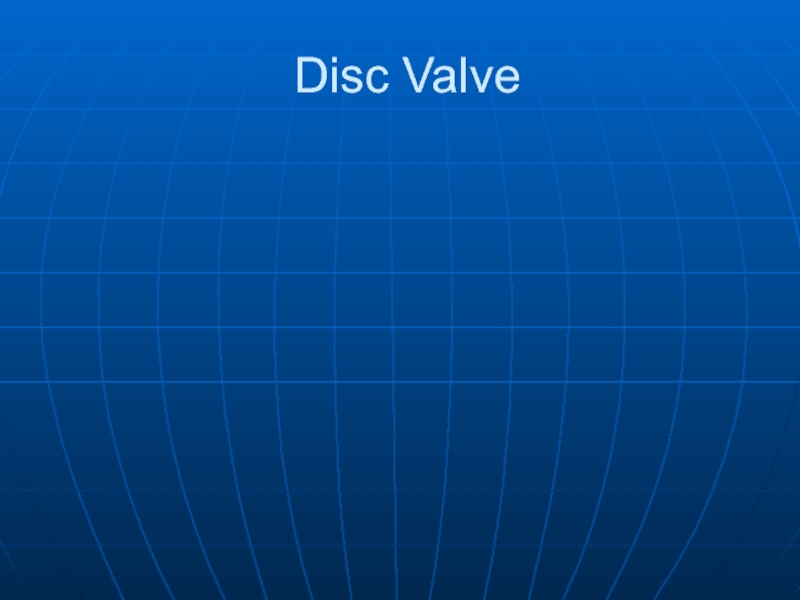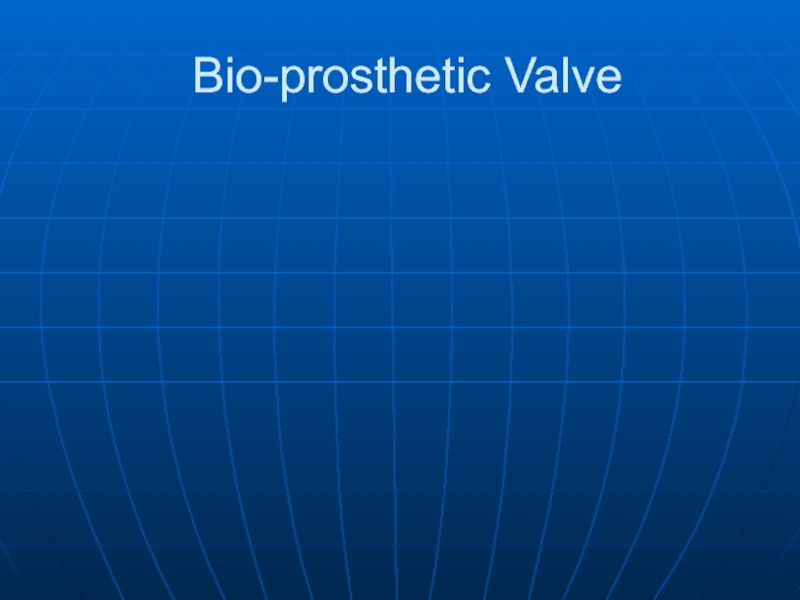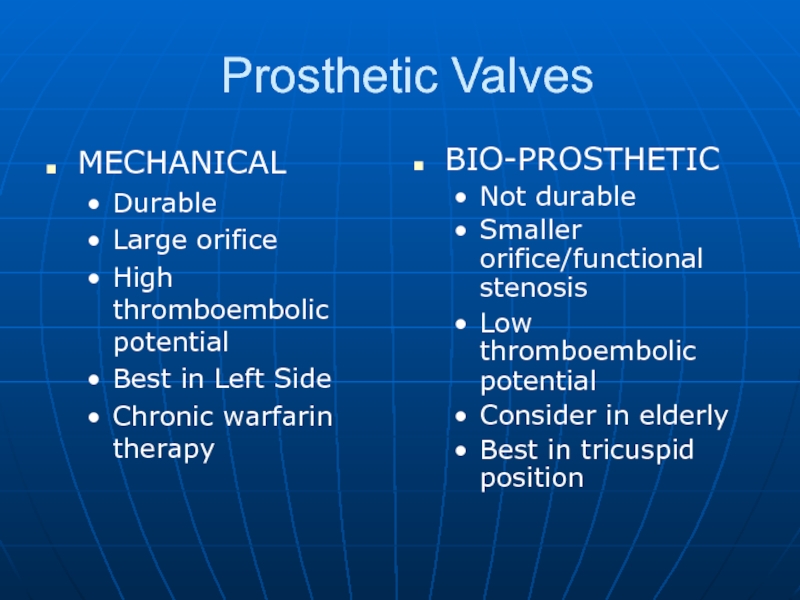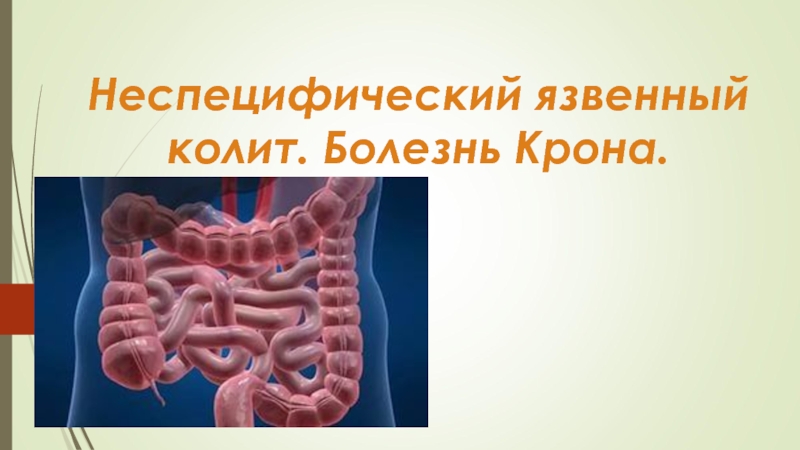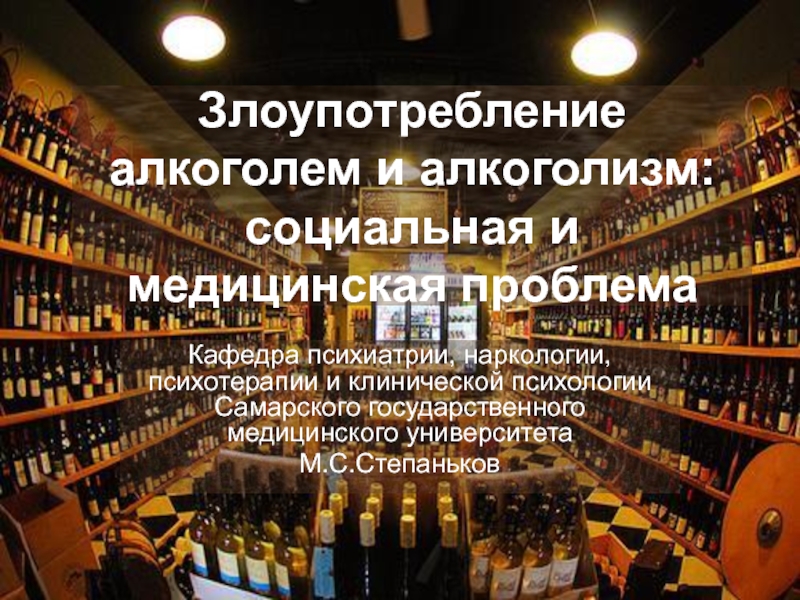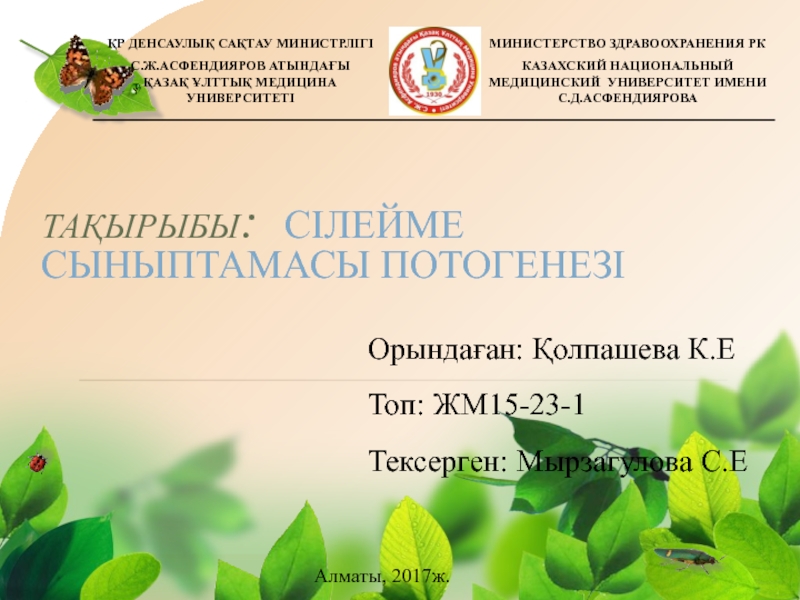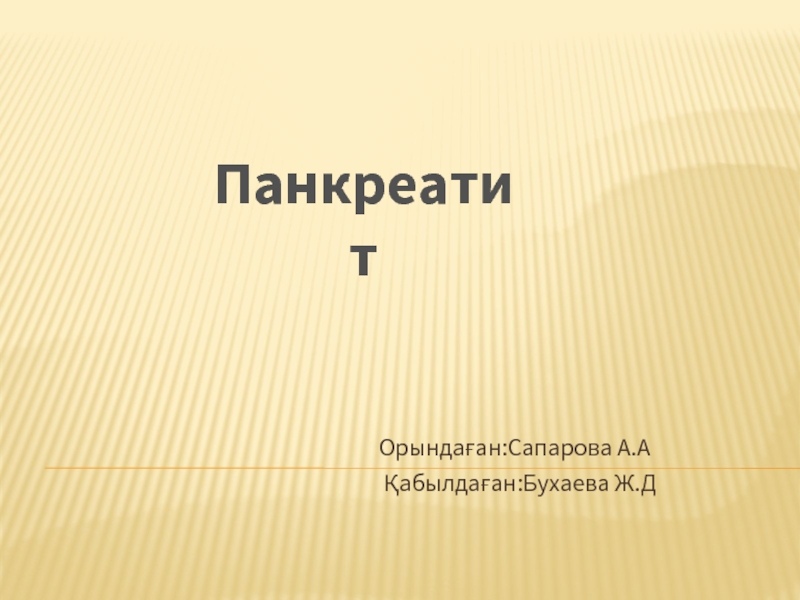- Главная
- Разное
- Дизайн
- Бизнес и предпринимательство
- Аналитика
- Образование
- Развлечения
- Красота и здоровье
- Финансы
- Государство
- Путешествия
- Спорт
- Недвижимость
- Армия
- Графика
- Культурология
- Еда и кулинария
- Лингвистика
- Английский язык
- Астрономия
- Алгебра
- Биология
- География
- Детские презентации
- Информатика
- История
- Литература
- Маркетинг
- Математика
- Медицина
- Менеджмент
- Музыка
- МХК
- Немецкий язык
- ОБЖ
- Обществознание
- Окружающий мир
- Педагогика
- Русский язык
- Технология
- Физика
- Философия
- Химия
- Шаблоны, картинки для презентаций
- Экология
- Экономика
- Юриспруденция
Aortic Stenosis презентация
Содержание
- 1. Aortic Stenosis
- 2. Aortic Stenosis Etiology Physical Examination Assessing Severity Natural History Prognosis Timing of Surgery
- 3. Aortic Stenosis: Etiology Congenital bicuspid valve is
- 4. Bicuspid Aortic Valve
- 5. Aortic Stenosis - Etiology Young or middle-aged
- 6. Aortic Stenosis: Symptoms Cardinal Symptoms Chest pain
- 7. Aortic Stenosis: Physical Findings Intensity DOES NOT
- 8. Aortic Stenosis: Physical Findings
- 9. Severity of Stenosis Normal aortic valve area
- 10. Diagnosis: Echocardiogram Etiology Valve gradient and area
- 11. Echocardiogram
- 12. Doppler estimation of AVA
- 13. Cardiac catheteriztion Gorlin Method Simplified: Hakke’s formula AVA=CO/√(p-p gradient)
- 14. Low gradient AS Calculated AVA is < 1.0 cm2 , But… AV gradient is
- 15. Low gradient AS
- 16. Aortic Stenosis: Prognosis Therapy: Valve replacement for
- 17. Natural History of Aortic Stenosis Heart failure
- 19. Operative mortality of AVR in the
- 20. AVR is recommended in symptomatic patients
- 21. PARTNER Study Design N = 358 Inoperable
- 22. All-Cause Mortality Landmark Analysis
- 24. Prosthetic Heart Valves
- 25. Caged-Ball Valve
- 26. Disc Valve
- 27. Bio-prosthetic Valve
- 28. Prosthetic Valves MECHANICAL Durable Large orifice High
Слайд 2Aortic Stenosis
Etiology
Physical Examination
Assessing Severity
Natural History
Prognosis
Timing of Surgery
Слайд 3Aortic Stenosis: Etiology
Congenital bicuspid valve is the most common abnormality
Rheumatic heart
Normal Bicuspid Ao V “Normal” geriatric Rheumatic calcific valve
Слайд 5Aortic Stenosis - Etiology
Young or middle-aged patient (4 & 5th decades)
Bicuspid
2% population
3:1 male:female distribution
Co-existing coarctation 6% of patients
Rarely
Unicuspid valve
Sub-aortic stenosis
Discrete
Diffuse (Tunnel)
Old patient think degenerative (6,7,8th decades)
Слайд 6Aortic Stenosis: Symptoms
Cardinal Symptoms
Chest pain (angina)
Reduced coronary flow reserve
Increased demand-high afterload
Syncope/Dizziness
Fixed cardiac output
Vasodepressor response
Dyspnea on exertion & rest
Impaired exercise tolerance
Other signs of LV failure
Diastolic & systolic dysfunction
Слайд 7Aortic Stenosis: Physical Findings
Intensity DOES NOT predict severity
Presence of thrill DOES
“Diamond” shaped, harsh, systolic crescendo-decrescendo
Decreased, delay & prolongation of pulse amplitude
Decreasing intensity of S2
S4 (with left ventricular hypertrophy)
S3 (with left ventricular failure)
Слайд 9Severity of Stenosis
Normal aortic valve area 2.5-3.5 cm2
Mild stenosis 1.5-2.5 cm2
Moderate
Severe stenosis < 1.0 cm2
Critical stenosis < 0.7 cm2
Onset of symptoms
0.9 cm2 with CAD
0.7 cm2 without CAD
Слайд 10Diagnosis: Echocardiogram
Etiology
Valve gradient and area
LVH
Systolic LV function
Diastolic LV function
LA size
Concomitant regional
Coarctation associated with bicuspid AV
Слайд 14Low gradient AS
Calculated AVA is < 1.0 cm2 , But…
AV gradient
Stenotic or not Stenotic?
Слайд 16Aortic Stenosis: Prognosis
Therapy: Valve replacement for severe aortic stenosis
Operative mortality (elderly)
Event rate in asymptomatic severe AS ~ 1%/year
Слайд 17Natural History of Aortic Stenosis
Heart failure reduces life expectancy to less
Angina and syncope reduce life expectancy between 2 and 5 years
Rate of progression ↓ @ 0.1 cm2/year
Слайд 19Operative mortality of AVR
in the elderly
~ 4-24%/year
Risk factors for operative
Functional class
Lack of sinus rhythm
HTN
Pre-existing LV dysfunction
Aortic regurgitation
Concomitant surgical procedures:CABG/MV surgery
Previous bypass
Emergency surgery
CAD
Female gender
Слайд 20AVR is recommended in symptomatic patients with severe AS (stage D1)
Decreased systolic opening of a calcified or congenitally
stenotic aortic valve; and
An aortic velocity 4.0 m per second or greater or mean
pressure gradient 40 mm Hg or higher; and
Symptoms of HF, syncope, exertional dyspnea,
angina, or (pre)syncope by history or on exercise testing.
Слайд 21PARTNER Study Design
N = 358
Inoperable
Standard
Therapy
n = 179
ASSESSMENT: Transfemoral Access
TF TAVR
n =
Primary Endpoint: All-Cause Mortality
Over Length of Trial (Superiority)
1:1 Randomization
VS
Symptomatic Severe Aortic Stenosis
Primary endpoint evaluated when all patients reached one year follow-up.
After primary endpoint analysis reached, patients were allowed to cross-over to TAVR.
Severe Symptomatic AS with AVA< 0.8 cm2 (EOA index
< 0.5 cm2/m2), and mean gradient > 40 mmHg
or jet velocity > 4.0 m/s
Inoperable defined as risk of death or serious irreversible morbidity of AVR as assessed by cardiologist and two surgeons exceeding 50%.
Слайд 28Prosthetic Valves
MECHANICAL
Durable
Large orifice
High thromboembolic potential
Best in Left Side
Chronic warfarin therapy
BIO-PROSTHETIC
Not durable
Smaller
Low thromboembolic potential
Consider in elderly
Best in tricuspid position
